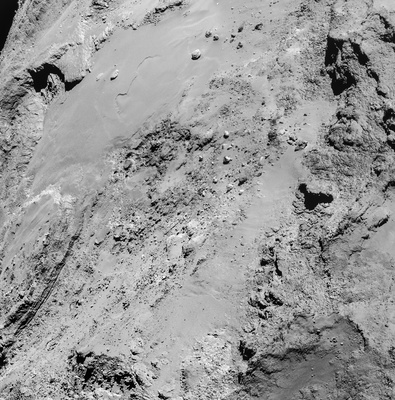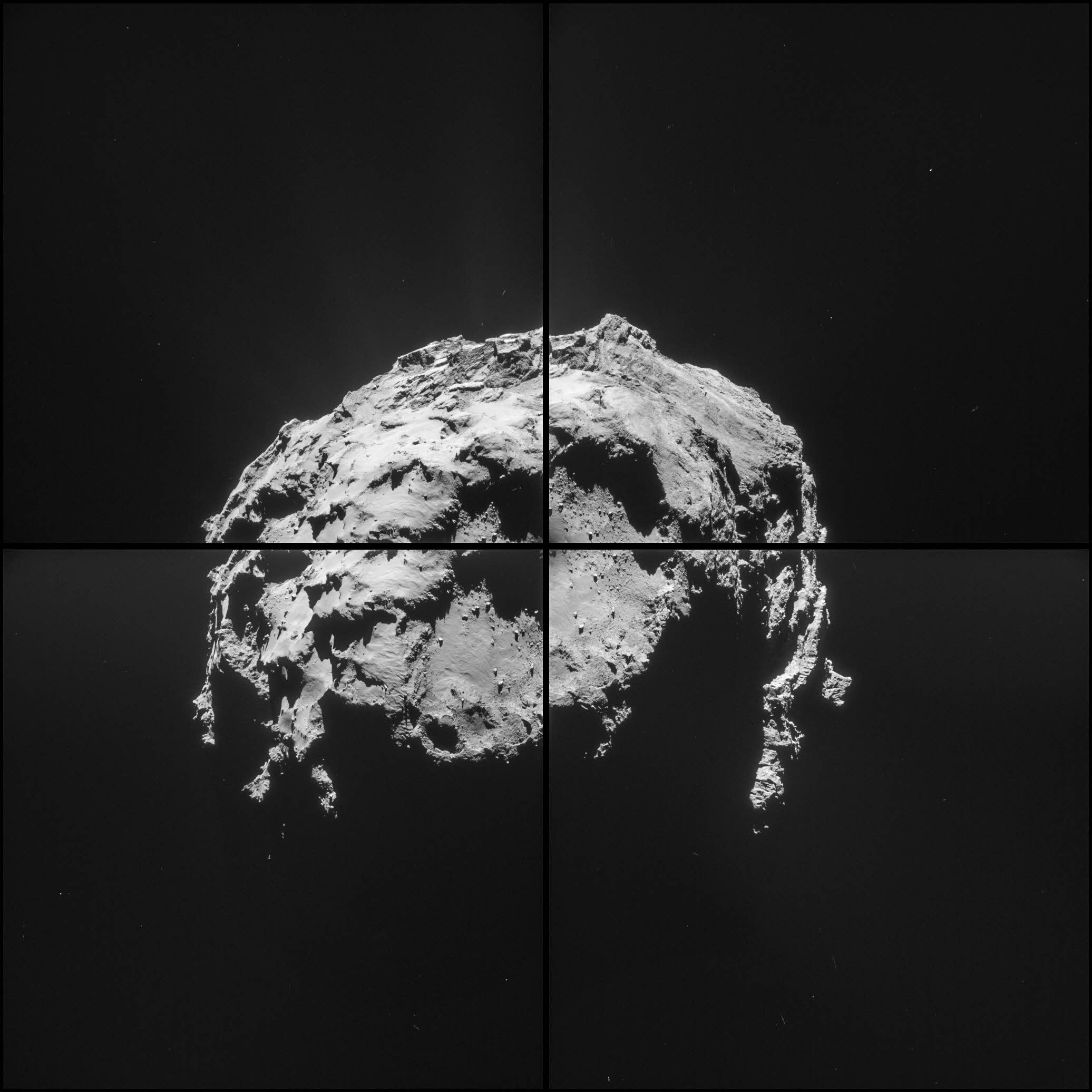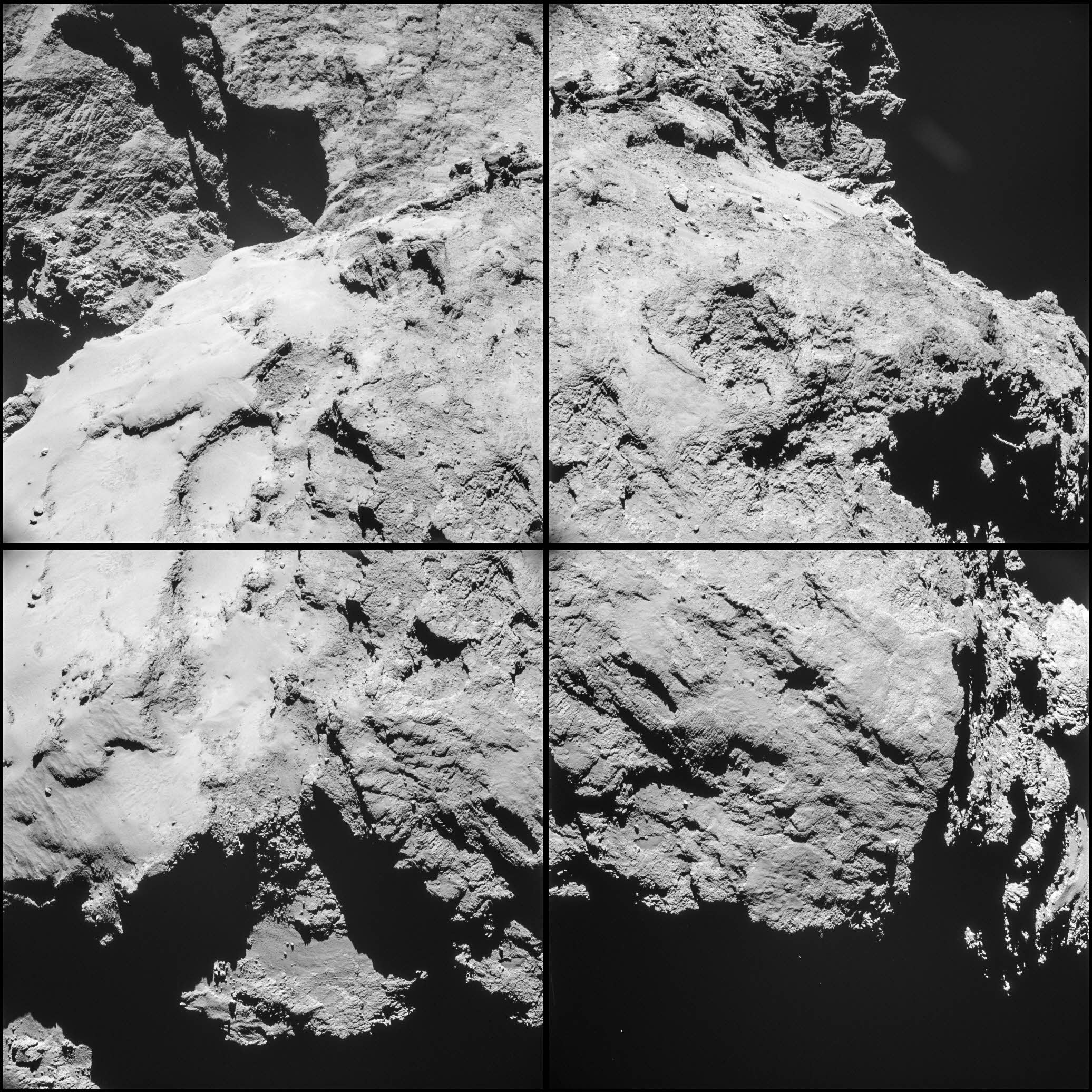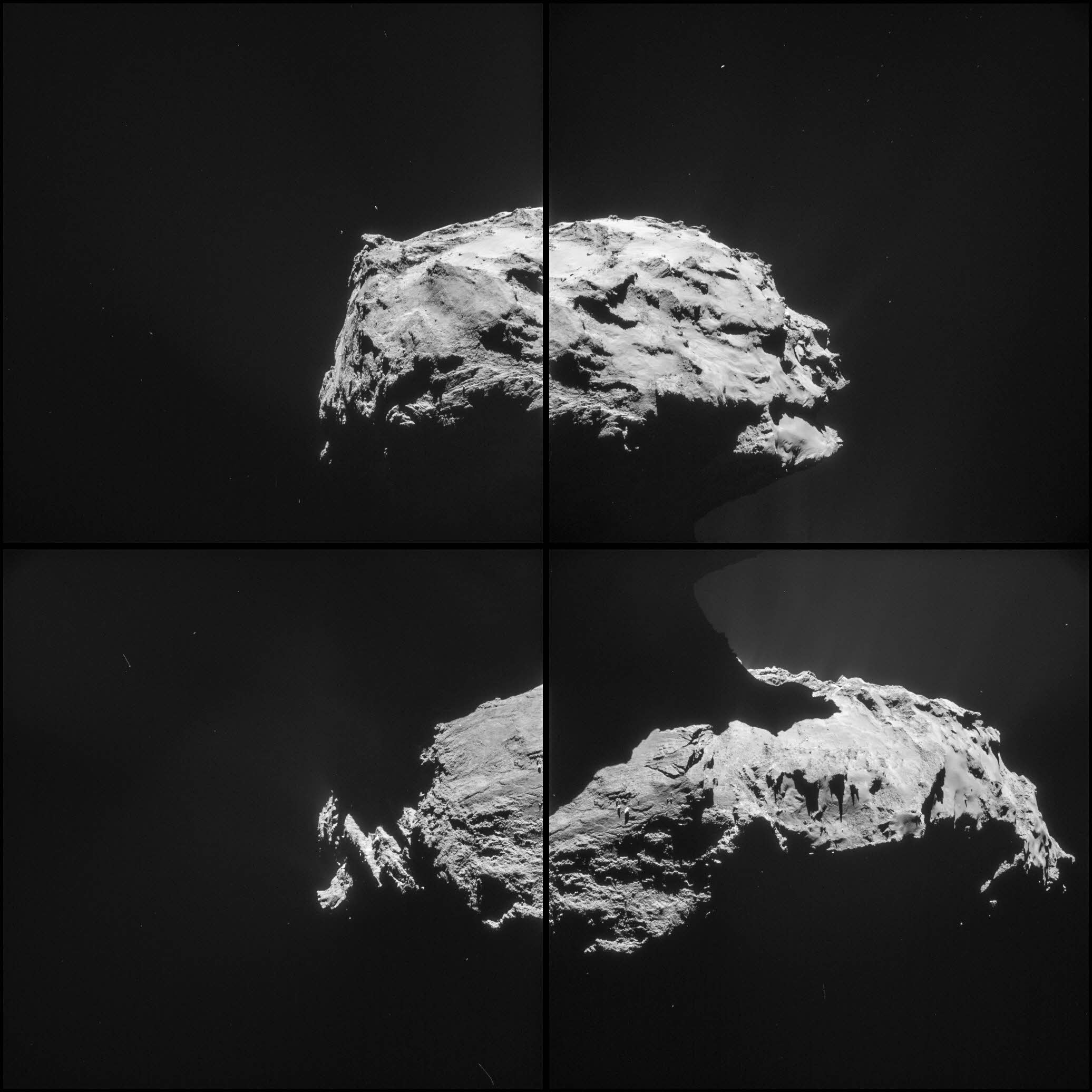CometWatch 14 February – flyby special
Four sets of NAVCAM images taken on 14 February were downlinked from the spacecraft yesterday and we are delighted to be able to share all four with you here today.
As usual, we present either a mosaic of montage of each image, noting that at the closest distances the combined effect of the rotation of the comet and the movement of the spacecraft between the first and last image being taken is particularly large, resulting in difficulties in creating an accurate mosaic. The montages have been tweaked in Lightroom for global intensity/contrast, but we have not made any local adjustment of e.g. ghosts/vignetting or other local intensity mismatches; the mosaic has been adjusted to fix boundary intensity mismatches. The individual frames are also provided here [as a zip file] to check features and to offer you the chance to create your own mosaics.
The closest images, taken shortly before (right) and after (above) the point of closest approach respectively, provide stunning details of the contrasting terrains that we have seen so far on the comet. Particularly notable in the image set taken at 14:15 UT (above) is the long, layered and fractured exposed surface at the lower left.
Towards the centre of the frame the faint outline of raised near-circular objects with smooth floors can be seen. In the same image, several angular blocks appear to jut out from beneath the surface. Boulders, ranging in size from a few metres to a few tens of metres, lie scattered across the whole surface of the comet. Here, in Imhotep, we see boulder Cheops towards the top centre of the mosaic.
During the flyby, the spacecraft passed through “zero phase” angle – i.e. with the Sun exactly behind the spacecraft – offering extremely good illumination conditions. As well as providing the opportunity to take close-up high-resolution images of the comet surface, flybys like this also allow Rosetta’s instruments to sample the innermost parts of the comet’s atmosphere, or coma, to better understand the connection between the source of the observed activity and the wider coma.
Rosetta is now moving out for a far view of the comet – it will reach a distance of about 255 km from the comet centre tomorrow.



